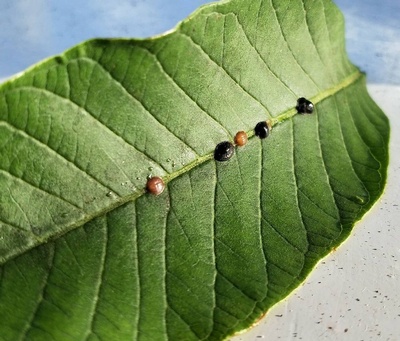Pesky Pests and How to Deal: Scale

Image by @ausphil_adventures
While scale is a less common pest, if you are a lifelong plant-keeper it’s bound to crop up at some point. But worry not - with a little bit of know-how and effort you can get your plant scale-less and healthy again in no time!
Identification
Scale insects typically look like little brown or beige bumps. They are most common on the underside of leaves, especially along the leaf veins where they suck the plant's sap. You may notice that your plant looks a little droopy or deflated which is often an indication of pests. On sturdier tree-like plants like Aralia and Schefflera you may find them along the stems and trunks so it’s always good to keep your eyes peeled for changes in texture and colour in these areas.
Treatment
The first step is to manually remove the scale. This is best done with a Q-tip dipped in rubbing alcohol. They should wipe off easily with very little pressure.
As the juvenile scale can be near invisible to the eye, using an insecticidal soap spray afterwards to hit any insects you may have missed is your second step. Apply this at night time as some insecticides can make hour plant sensitive to sunlight.
Preventing the spread of scale
Keep your affected plant away from others. Scale insects move by crawling when juveniles so if plants are touching they can infect more of your collection.

Image by @parker_biolabs
Follow-up
It is likely that you will need to do repeat treatments in a month or two. While scale is a pest that can affect your plant's health over time, they are not usually as damaging as some other pests like thrips. Staying on top of scale will allow them to be manageable without spreading to the rest of your collection. With this in mind, make it a habit to check your plants weekly to see if more treatment is needed.
Know when to call it quits
If your plant has large leaves like a bird of paradise, manually removing scale should be easy – hurray! But if your plant has many delicate leaves, it may prove to be a Herculean task. Depending on the type of plant, the severity of the infestation and the amount of time you’re willing to invest, sometimes it is in the best interest of your plant collection to discard of an infected plant.
Now you’re a pro! For help identifying pests feel free to DM us or reach out at community@urbangardenertoronto.com